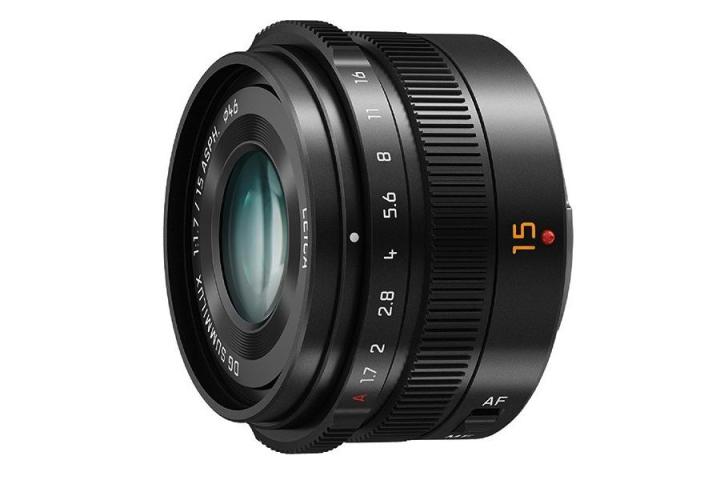
For all of you Panasonic Micro Four Thirds shooters, you’ll be happy to know there’s a new fast wide-angle lens available: the Leica DG Summilux 15mm f/1.7 lens. It’s not a big surprise, as its development was revealed back in October 2013 alongside the GM1 Micro Four Thirds camera. The lens has an angle-of-view equivalent to that of a 30mm lens on 35mm full-frame, which puts it close to the classic wide-angle focal length of 28mm. What distinguishes it from most common wide-angle lenses is its fast initial aperture of f/1.7, which allows for faster shutter speeds at lower ISO settings.
The most notable feature of this lens is the aperture ring around the front of the lens barrel, which reminds us a bit of Leica’s own M-mount lenses for their rangefinder camera system. The ring has an “A” position for automatic control of the aperture, and can be used to manually set the desired aperture value in aperture priority mode. In addition to the manual aperture ring, the lens barrel has a second ring for manual focus, as well as an AF/MF switch. The front of the lens has a 46mm filter thread for attaching photographic filters.
The optical construction consists of 9 lenses in 7 groups, three of which feature aspherical surfaces that help reduce the size of the lens and boost image quality. Furthermore, Panasonic’s Nano Surface Coating technology is applied in order to reduce lens flare. The lens promises quick and accurate autofocus thanks to an inner focusing system and compatibility with the 240-frames-per-second sensor readout of the latest Panasonic Lumix G camera models, such as the Lumix GM1.
The Leica DG Summilux 15mm f/1.7 will be available in June, in black and silver colors, at a retail price of $599. It will also be available in a kit with the Lumix GM1 camera, for which it will be a perfect match with its small size of 2.26 x 1.42 inches, and low weight of merely a quarter of a pound. The U.S. retail price of the kit has yet to be announced.
(Via dpreview)


